Upon returning from our first trip to Mexico City in 2019, I was ensorceled. The city wove a spell around me, unlike anything I’d ever experienced. Since then, I’ve returned over four times and loved my time there more and more with each visit. Mexico City is on the top of almost all the ‘Best Places to Visit in 2023‘ lists, and with good reason! But when I visited the first time, there was SO much I learned. Almost right away. And with every subsequent visit, I picked up more tips. So learn from my mistakes, triumphs and suggestions so you can plan the perfect trip to Mexico City!

- 1. Don't believe everything you hear about the crime
- 2. The Altitude
- 3. Street Food is Delicious, but do keep away from the water
- 4. Buildings are a virtual living rainbow of colours
- 5. Ubers are convenient, cheap and clean
- 6. IT'S SO GREEN!
- 7. People are so Friendly!
- 8. The city really is THAT BIG
- 9. Learn Spanish!
- 10. Always carry Tissues & Hand sanitizer

1. Don’t believe everything you hear about the crime
There is so much out there in the media about Mexico which is either just plain untrue, exaggerated or even just circumstantial. Sure, there is crime, but you’ll find crime in any big city. I think shows like ‘Narcos‘ and everything being said in the US media about Mexico has vastly, and falsely, influenced people’s opinions about Mexico. Don’t rely on what you hear, instead of doing the research about safety for yourself.
Although other areas of Mexico are under travel advisories and warnings, Mexico City is not under any travel restrictions. What we learnt when visiting is that crime in the city, especially that related to tourism (IE., pick-pocketing, financial kidnapping and taxi scams) has been vastly reduced over the years.
Unfortunately for the country, crime in Mexico is more gang-related, and therefore there is less petty theft. So if you stick to areas of town you know aren’t a problem, you shouldn’t experience any issues. We never felt unsafe in the tourist areas. And the increased police presence throughout the city, enforced by their new president, always makes you feel at ease. I felt much more unsafe in Barcelona than I ever did in Mexico City.

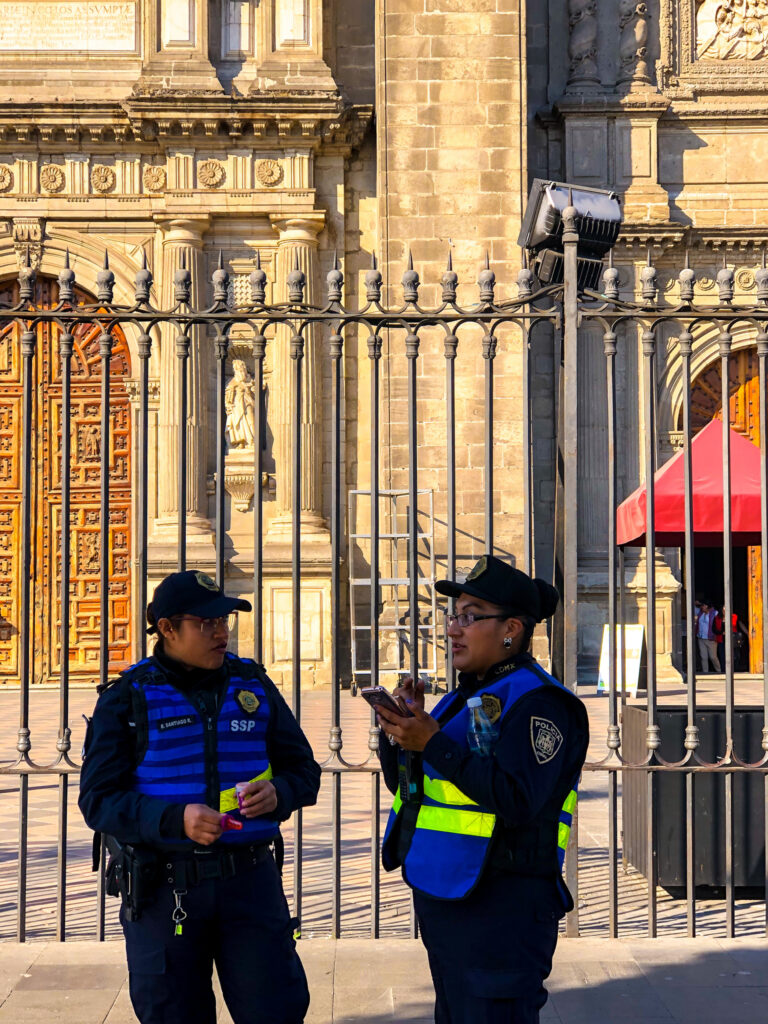
Tips to Keep Safe
That doesn’t mean you should travel without a care in the world. Keep your wits about you, and be mindful of your surroundings. And always keep an eye on valuable items. We spent some time researching which areas to avoid and the safest areas to stay in. That way, even at night, we knew we were sticking to the safest areas of the city. Neighbourhoods like La Condesa, Roma, Polanco and Coyoacan are amazing neighbourhoods to explore day or night. While the Historic Centre is great to visit during the day, at night, everything closes down. And it’s a bit of a dead zone, so even if it’s safe, it does feel a bit eerie. Areas like Tepito, Doctores, Ciudad Neza, and Iztapalapa should be avoided. Just like you probably have areas in your own hometowns which you avoid as well.

2. The Altitude
Mexico City is located at an altitude of 2,240 meters (7,350 ft)! That’s over 600 meters more than in Denver, which sits at an altitude of 1,560 meters! But what does this really mean? Many people don’t even consider the altitude when choosing Mexico City as a destination. And some of them are never any the wiser. For other people, they might experience altitude sickness. Altitude sickness can range from something as subtle as feeling more tired than usual. To full-on bouts of severe exhaustion, nausea, headaches and vertigo.
As someone who has experienced severe migraines and vertigo before in their life, I wanted nothing to do with this altitude sickness. While there is no way to know if you’ll be at risk (there is no correlation between altitude sickness and physical fitness, for instance), there are some things you can do to prevent it if you’re worried. One is just to ensure that you’re properly hydrated before landing. Avoiding salty food, eating carbs and maybe avoiding excess alcohol for the first few days.


Prescriptions for Altitude Sickness
I went ahead and visited my local travel doctor before leaving. I got a prescription for Acetazolamide, which is used to prevent and reduce the symptoms of altitude sickness. My doctor said it wasn’t absolutely necessary since the altitude is just below the number where you’d usually be prescribed the medication. But since I wanted peace of mind I went ahead with the prescription. I am happy to report, I felt zero symptoms of altitude sickness!
The best thing is to know what to expect, how to prevent it and what to do if you get sick. If you do get sick, REST is BEST! Sleep it off and continue to drink lots and lots of bottled water. And in a day, you’ll have acclimatized to the altitude, and you’ll be ready to take on the city.

3. Street Food is Delicious, but do keep away from the water
Mexico City has some of the best food I’ve eaten anywhere in the world. And did I avoid eating on the streets? No, I did not. Street food is just as delicious as some of the food I got in fancy restaurants. And avoiding this iconic piece of Mexican cuisine would be like visiting Paris and not eating a baguette. And while street food is delicious, you do need to be careful about what you’re eating and who you’re eating it from.
If you’re choosing to get anything to drink from a street vendor make sure it’s always without ice. You can ask for no ice by simply saying ‘sin hielo‘. If you’re looking to get an Agua Fresca (drinks made with water and fruit) make sure you ask them if it’s made with purified water or ‘Agua Pura‘. If you see bottles of purified water behind the counter, you’ll be fine. But if you see any water coming directly from a pail of water in an unidentified container, I would skip it altogether.
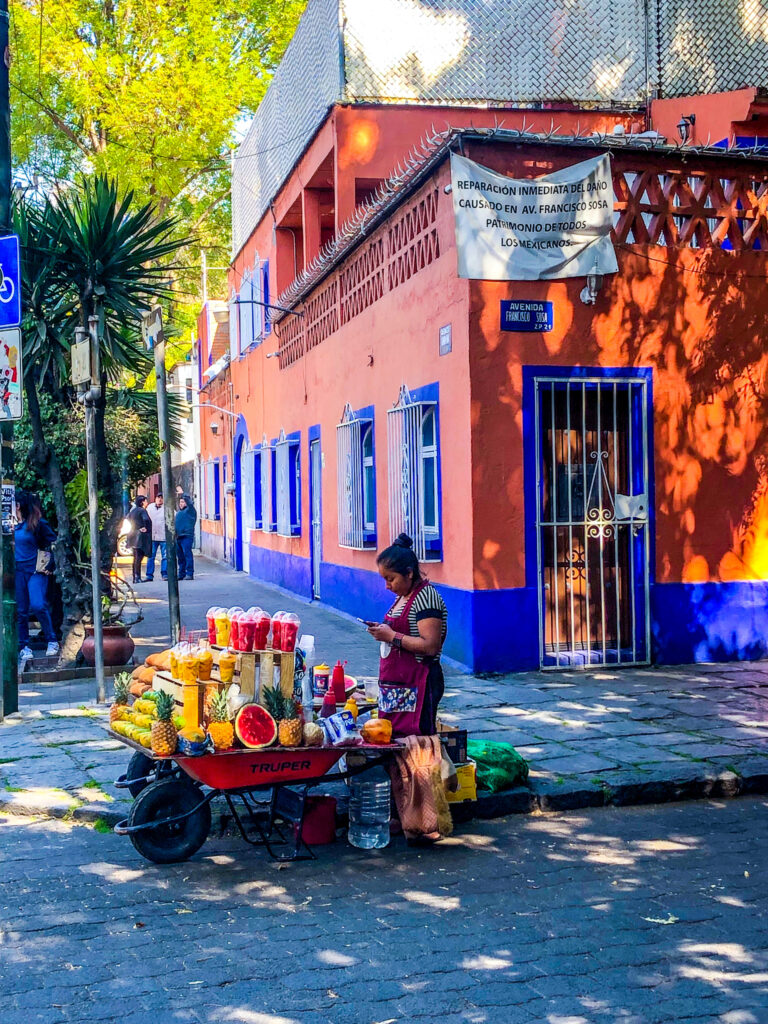

Don’t Drink Unpurified Water
Unpurified water is one of the most common ways that people get sick in Mexico City. And it’s not just drinking the water which can get you sick. Eating raw food which has been washed in unpurified water is another big culprit. Many people avoid salads for this exact reason. Something which I was concerned about was raw cilantro and onions on my tacos and guacamole. I took the risk and went ahead and ate all this. And was totally fine. But I did choose to avoid things like lettuce since I knew this veggie is always washed in water before serving.
Another popular street treat sold all over the city are containers of fresh fruits. In most cases, these fruits have been peeled or had their outer casing removed with a knife. That means they are fine to eat since no water was involved. I would make sure that the fruit hasn’t been sitting out too long since this might expose the food to disease-carrying insects. And airborne bacteria. It’s always good to ask for a fresh sliced mango, pineapple or papaya instead of one that has been sitting out in the sun.

Eat what the locals eat
Another tip for eating street food and not getting sick is to try to eat what the locals eat. Searching for something that is very Americanized might mean it’s actually quite unpopular with the locals. And therefore not very fresh. Look for long lines, study what the locals are ordering, and just go for it! You probably won’t get sick, and even if you don’t know what you ordered, street food in Mexico is so cheap it’s always worth trying something new!

Timing is Key
Be sure to eat when the locals eat. If the locals are eating at noon, try to match their schedule. Even if it means lining up, you know you’ll get the freshest food. One piece of advice that you might hear all the time is to avoid sauces. This is because most sauces are kept at room temperature meaning they’re more susceptible to bacteria. But if you’re visiting Mexico, you’ll know that sauces are everything! Salsa isn’t just that tomato-based condiment you find in the US. Salsa actually just means ‘sauce’ in Spanish. It’s a term for everything from pico de gallo to guacamole. And trust me they’re all delicious and all need to be sampled.
My best piece of advice for avoiding getting sick with sauces is just to take a good look at it. See if it looks fresh or looks a bit off. The smaller the container it’s in, the better. Because that means they’re replenishing it more frequently. Either with a large container kept in the fridge or made a new batch fresh.


What to do if you get Sick?
In the end, you could follow all this advice and more, and you still might end up getting sick. Just by pure coincidence. Although having travellers’ diarrhea might be pretty awful in the moment, it would be an even greater waste to go to a country like Mexico and not sample some of their amazing local cuisine. So what do you do if you do get sick? It’s always worth visiting a travel doctor before you leave for vacation. They’ll make sure that all your shots are up-to-date. And also give you some medication which can help prevent travellers’ diarrhea. This means that even if you happen to ingest a little bit of bacteria, you might be able to handle it better than if you had not had this medication. It’s a touch pricey, but I highly recommend it.
Your doctor might also prescribe you some prescription diarrhea medication as well as some rehydration tablets. These are all great to have on hand to help you recover should you get sick. I also always carry some probiotics, digestive enzymes, activated charcoal and ginger tea. No matter where I’m travelling.Just in case I, or my travel companions, get sick. Mint or ginger tea is a great remedy that you can find in most cafes in Mexico City, perfect for even a tiny stomach bug.
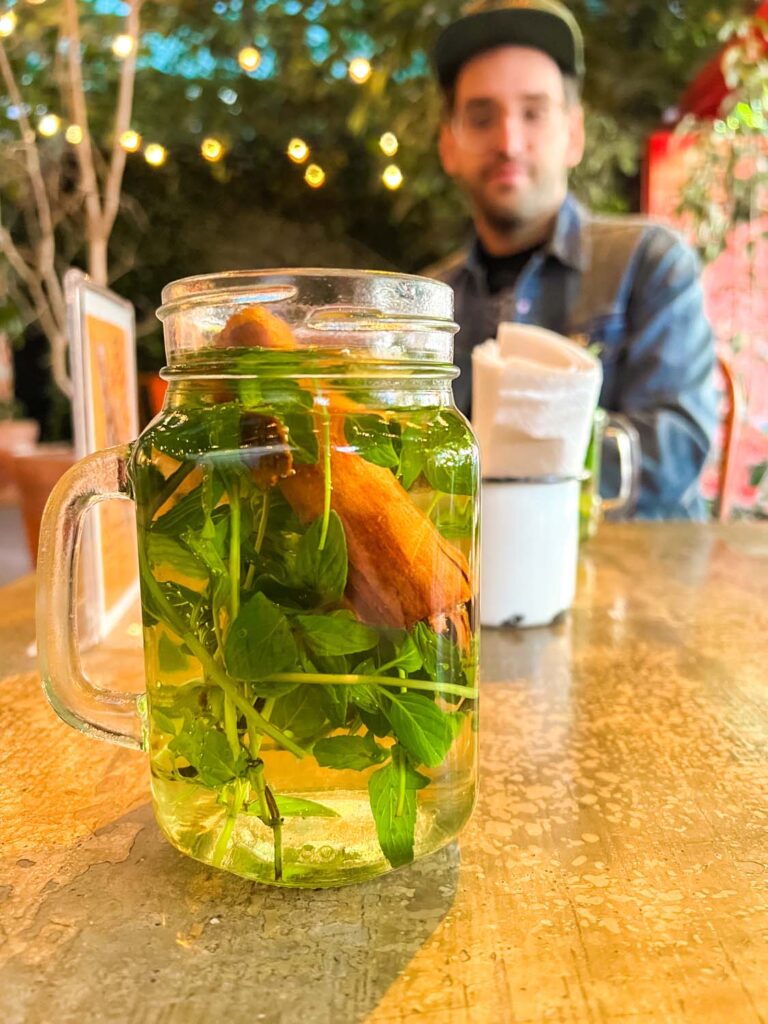

4. Buildings are a virtual living rainbow of colours
Before arriving in Mexico City, I had heard about all the colourful buildings and streets which cover the landscape. But I never really understood just how astoundingly vivid it could be until I saw it for myself. Even when we were flying into the city, I peered out of the airplane window and was mesmerized by how bright and eccentric the buildings looked. Even from high above the city. It looks like a kind of patchwork quilt of colours and patterns. Everywhere you go, even in some of the poorer neighbourhoods, you’ll see fantastical coloured buildings. There is also incredible hand-painted signs, artistic murals on every street corner and even the cars and buses are just as vibrant as the city around it.

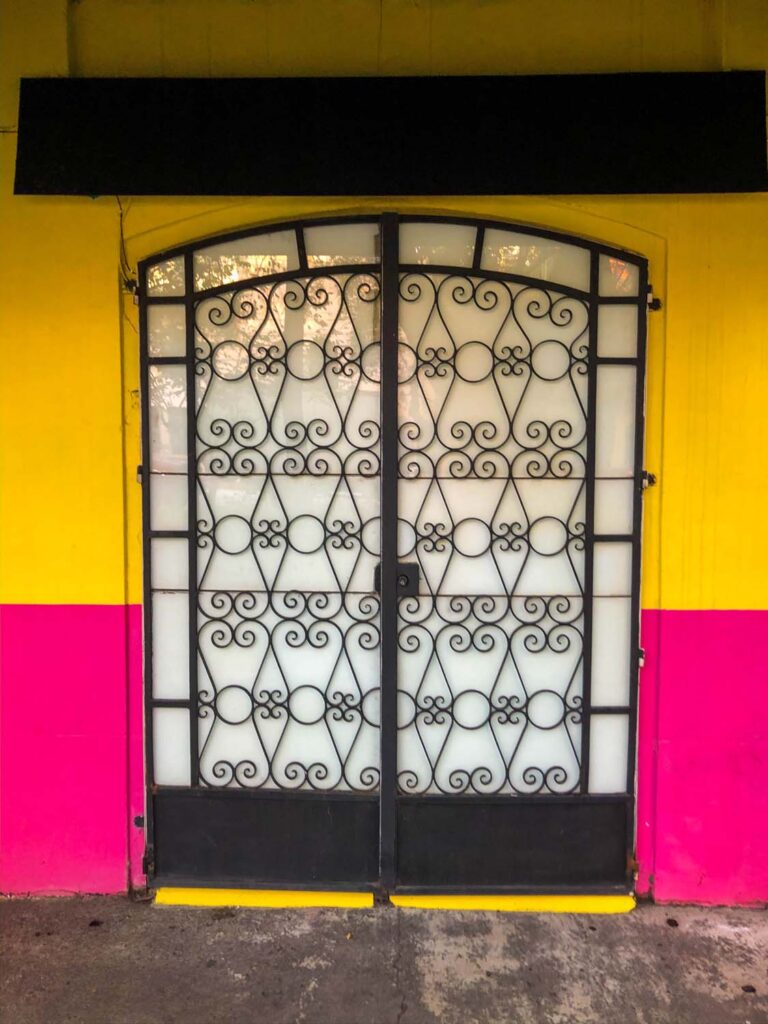

An artists’ collective known as the German Crew even transformed the working-class “barrio” of Las Palmitas into a giant, colorful mural. In an effort to change its gritty image. And it worked! There was a reduction in crime in those areas as people felt more pride in their neighbourhood. And actively wanted to make it a better place to live. It’s amazing what a little bit of colour can do.
You can wander the streets for hours and hours and never get sick of seeing these unbelievable paintings along the way. When planning a trip, sometimes you’re so focused on visiting sites and museums or famous landmarks that you forget that a simple wander down a few side streets might be just as meaningful.


5. Ubers are convenient, cheap and clean
If you’re one of those people that is really concerned about safety, one of the greatest inventions to calm your mind is Uber! Uber moved into Mexico City only a few years ago. And it’s value to both tourists and locals alike is unmatched. Taxis are notorious for either changing their fares along the way to unsuspecting tourists. And rumours of taxi kidnappings were prevalent in the 90s. This is when a taxi driver would drive you to a location and basically just force you to pay an exorbitant sum to get you to where you really wanted to go. Although those cases are rare nowadays, it was definitely a scar on Mexico City’s reputation. One that often puts off tourists from visiting. Uber solves a myriad of these problems. You know exactly what you’re going to pay upfront, and can see where you’re headed. As well a look at the reviews of your driver.
Using Uber in CDMX
Also, you don’t need to worry about the language barrier since you can input the address yourself. We took Ubers absolutely everywhere. From door to door we had nothing but incredible experiences. We would chat with the drivers who spoke some English. And even tried our best to chat with the drivers in Spanish. They were always so kind and in a city where the traffic is as hectic as Mexico City, we felt they were all great drivers. The cars were clean, had charging cords for phones, and a bottle of water to cool off on hot days.
The traffic in Mexico City is just as bad as you hear. But don’t let that detract you from enjoying the city. Traffic, when you’re in an Uber, can be an added bonus. It allows you to see lots of parts of the city you might otherwise miss. We thought of it as a free sightseeing bus tour. Just make sure to leave with plenty of wiggle room in your schedule, as traffic can come out of nowhere.
Uber Pricing
And if you’re wondering about the price, Ubers are super cheap! Most of our rides were less than $4 USD. Even from the airport, our trip was less than $15 USD. While the metro in Mexico City is incredibly cheap, (around $.30 US), there are differing opinions about its safety. I’m sure some people have no issues. But even locals do warn tourists that they should be careful when riding. So if you’re like me and you like to enjoy the scenery around you as you travel, I highly recommend sticking with Uber.


6. IT’S SO GREEN!
Something I heard over and over before visiting Mexico City was about the pollution. And look, there is pollution. Every day we were there I would check my weather app. And there was definitely a high level of smog in the air. Even when we flew into the city, we could see the smog as we cruised down from the clouds. But was this something that I noticed day to day? No, not at all. And the reason why? The parks! Everywhere we seemed to go, they were palm trees as high as the eye could see. Lush tropical plants sprawl out over everything, covering not only just the parks but the side streets, the avenues and even on street corners.

Mexico City is home to Chapultepec Park, the largest city park in the western hemisphere, measuring over 686 hectares! They call this park the lungs of the city. As it pumps fresh oxygen into the valley of Mexico. But in addition to this park, the city has made huge efforts is creating greenspaces all over the city. To help combat the pollution. And it’s working. The air felt fresh in most of the places in the city that we went to. And by walking in the shade of the trees, even during the hottest time of the day, you never felt uncomfortable.



7. People are so Friendly!
For a country that often gets associated with crime and violence, I have to say, everyone I met or interacted with was nothing but kind, happy and helpful. People went out of their way at times to help us out. Be it with directions or even navigating a menu we couldn’t read. When we attended a busy Lucha Libre show, our friend dropped their phone down the seat risers. And our group couldn’t retrieve it. When the show was over, a huge group of locals all joined together to help us disassembled the risers. And got her phone back. It was a really sweet show of support from a bunch of strangers. Just one example of how everyone went out of their way to show visitors kindness.

8. The city really is THAT BIG
Mexico City is ranked the 5th largest city in the world! Over 21 million people live within its borders. Having been to the #1 spot on this list, Tokyo, we felt very prepared for the density and size. But for anyone who hasn’t visited one of these megacities, prepare yourself. In busy areas, the crush of people can be a bit overwhelming. But it’s all about finding those side streets, away from the main drags, where you can easily escape the crowds without going too far out of the way.
But in relaxing districts like La Condesa or Roma, it’s so peaceful and quiet you can’t even believe you’re in Mexico City. It feels more like a small town. One of the best ways to deal with a city this large is to ensure you plan out your days by neighbourhood. That way, you’re not running from one end of the city to another. Because at busy times of the day, it can take over an hour to get from end to end.
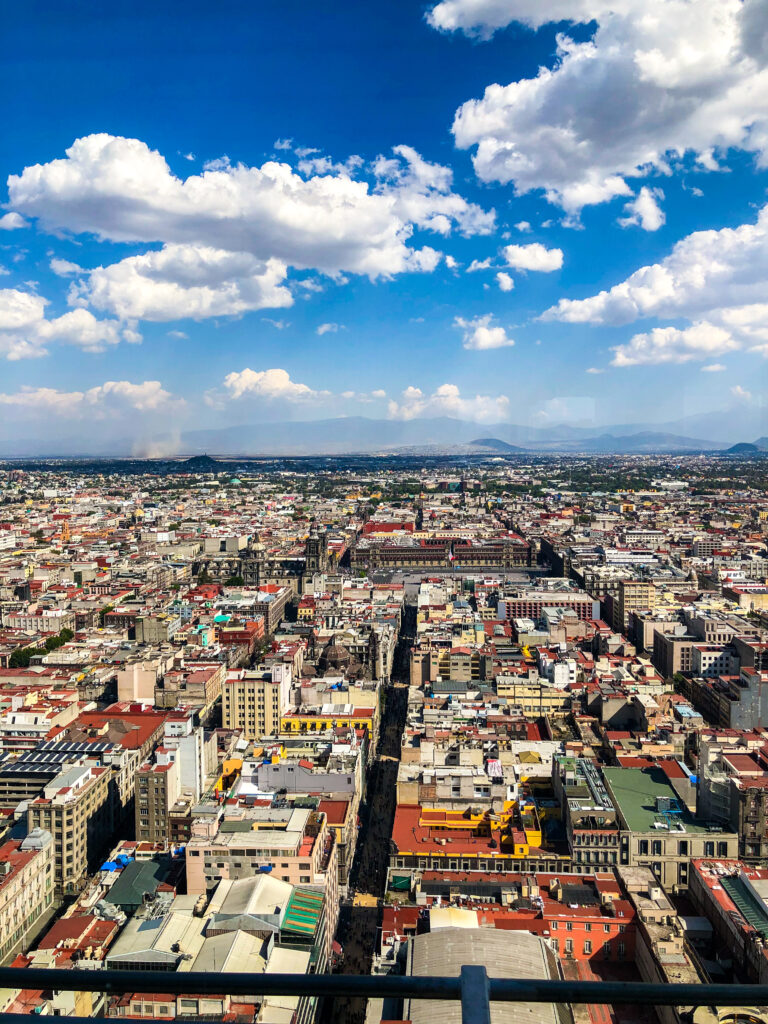
9. Learn Spanish!
Despite being a country so close to both Canada and the United States, most people in Mexico City do not speak English. And rightly so. Spanish is a fantastic language and a beautiful one to learn as a tourist. When you’re the one visiting a foreign country, you should be learning their language. Not the other way around. Spanish is fairly simple to speak and also to learn. Especially compared to my experience with learning Japanese or even Danish. Even if you just learn a few key phrases, that goes a long way with the locals. It shows them respect for their language and culture. Google Translate works really well if you have access to the internet or a roaming package. Either type in what you want translated or use the camera function to easily translate most menus.

10. Always carry Tissues & Hand sanitizer
Ok, this is a weird one, but I thought it needed to be discussed. One of the things which throws some people for a loop when visiting Mexico is the toilet situation. Most toilets in Mexico City require you to throw the toilet paper in a wastepaper basket, not down the toilet. It seems odd when you’re used to flushing, but it’s important you don’t, as it’s really bad for their plumbing.
Another thing which is important to know is most public toilets sometimes lack toilet paper altogether. So it’s a good idea to keep some Kleenex in your bag at all times. Some washrooms will also charge a few pesos for toilet paper so keep some small change with you. Since the water isn’t potable and could contain bacteria, I would almost always use hand sanitizer after using the restroom. We had travel-sized hand sanitizer on us at all times for these cases. They both take up so little room in your travel pack, so it’s a good idea to put those on your packing list!

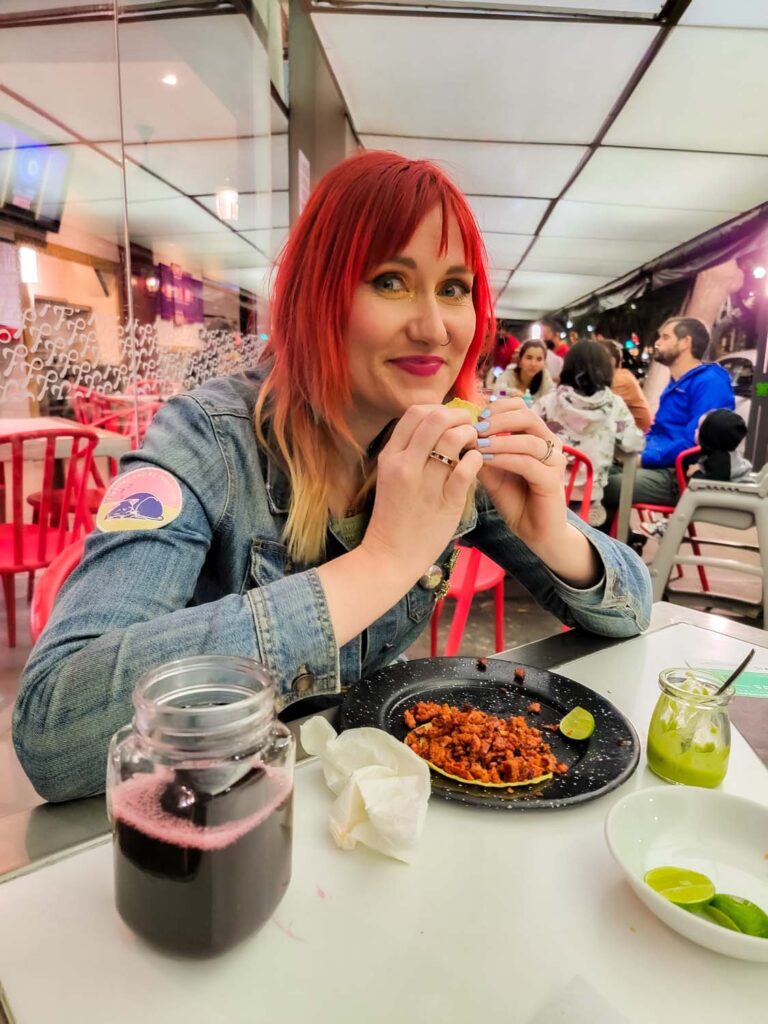
Conclusion
I have so much more to say about Mexico City and can’t wait to post all about the different places we explored, culinary delights we ate and other exciting adventures we took while visiting this amazing city! Let me know if you have any questions about Mexico City and I will be sure to answer them all in the comments!


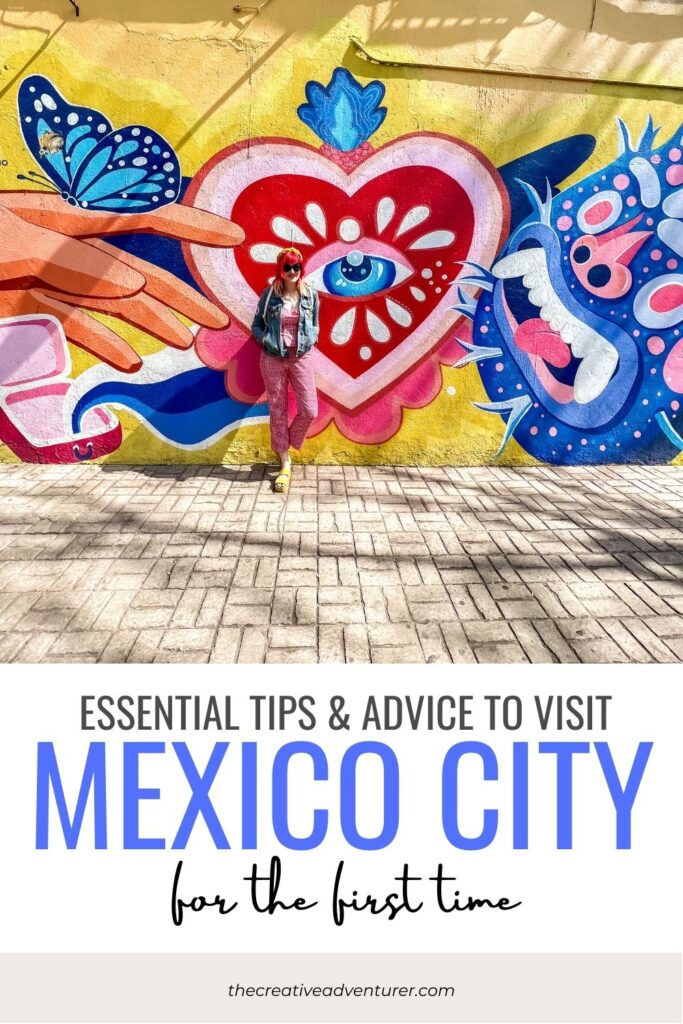











1 COMMENT
Emily
2 years agoMexico City is actually much larger than New York City and ranked 5/6th in the world and NYC not even making the top 10.